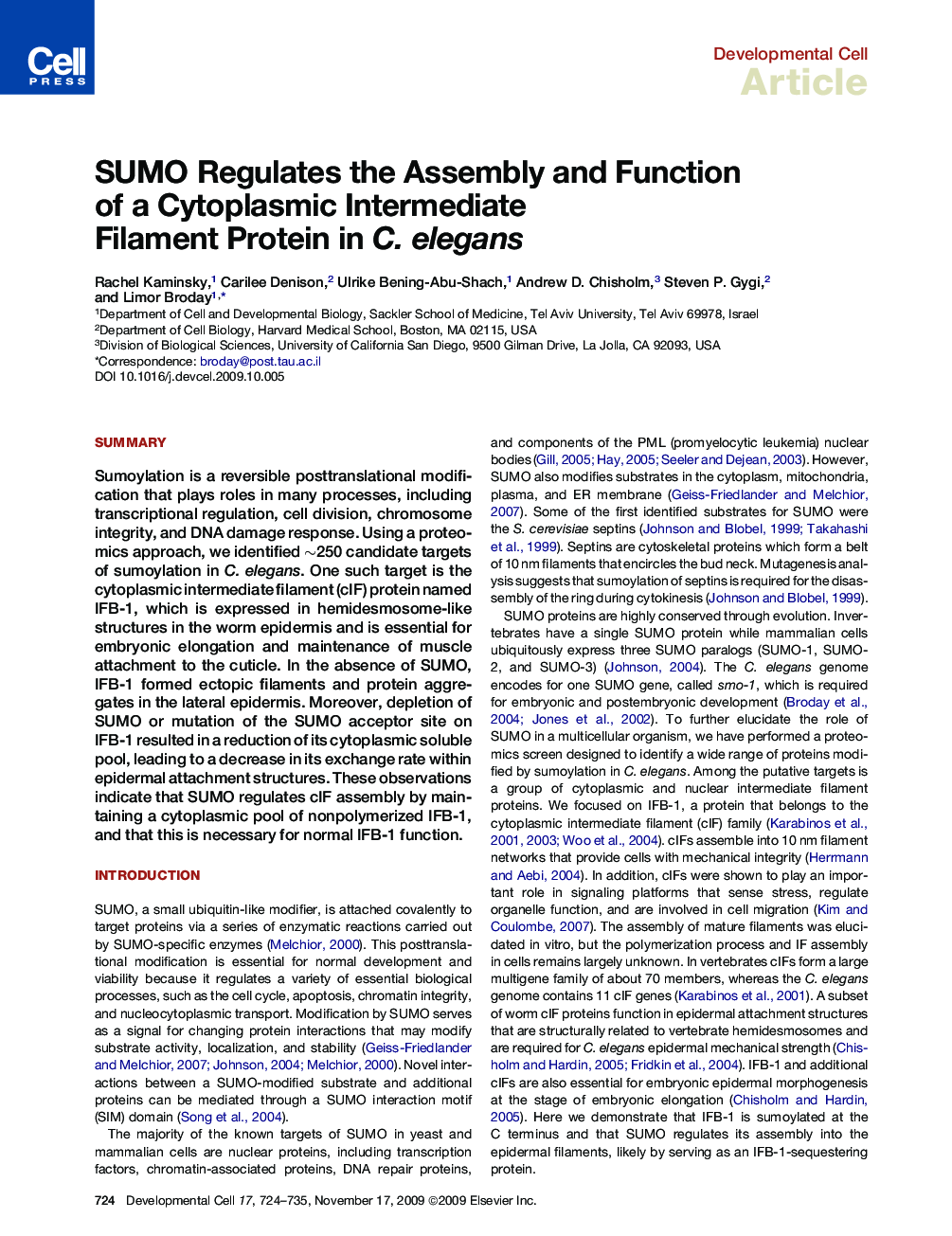| Article ID | Journal | Published Year | Pages | File Type |
|---|---|---|---|---|
| 2177259 | Developmental Cell | 2009 | 12 Pages |
SummarySumoylation is a reversible posttranslational modification that plays roles in many processes, including transcriptional regulation, cell division, chromosome integrity, and DNA damage response. Using a proteomics approach, we identified ∼250 candidate targets of sumoylation in C. elegans. One such target is the cytoplasmic intermediate filament (cIF) protein named IFB-1, which is expressed in hemidesmosome-like structures in the worm epidermis and is essential for embryonic elongation and maintenance of muscle attachment to the cuticle. In the absence of SUMO, IFB-1 formed ectopic filaments and protein aggregates in the lateral epidermis. Moreover, depletion of SUMO or mutation of the SUMO acceptor site on IFB-1 resulted in a reduction of its cytoplasmic soluble pool, leading to a decrease in its exchange rate within epidermal attachment structures. These observations indicate that SUMO regulates cIF assembly by maintaining a cytoplasmic pool of nonpolymerized IFB-1, and that this is necessary for normal IFB-1 function.
